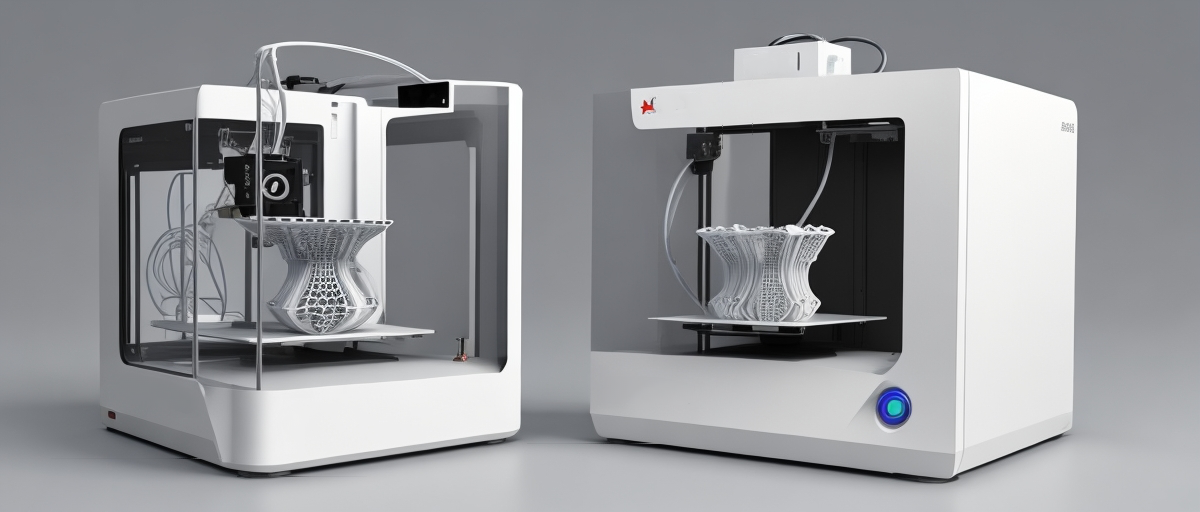In a world where mobility is highly valued, portable 3D printers are emerging as a beacon of innovation. These nimble machines break down the barriers of traditional additive manufacturing, bringing the power of 3D printing to virtually any location. From the classroom to the field, these compact devices are not just a novelty, they’re expanding the horizons of what’s possible with on-the-go fabrication.
Features of Portable 3D Printers

The advent of portable 3D printers has reshaped the landscape of rapid prototyping and personal manufacturing. The defining attribute of a portable 3D printer lies in its inherent design to be moved with ease. These devices are engineered with a focus on size and weight reduction, ensuring they are small enough to fit into carry-on luggage or a backpack, and light enough to be transported without strain, all while retaining the robust functionality of their stationary counterparts.
Many of these compact printers possess build volumes that are ingeniously designed to maximize the available space, optimizing the balance between portability and the ability to produce a wide range of print sizes. The build volume typically caters to small and medium-sized projects, which is sufficient for a significant range of applications, from creating detailed prototypes to producing functional parts on demand.
One of the most innovative features of certain portable 3D printers is the inclusion of battery power. With the ability to run independently of a wired power supply, these printers become invaluable tools for fieldwork in remote locations, from archeological sites to emergency relief zones, where electricity is limited or non-existent. The freedom to print without the constraint of stationary power sources opens up possibilities for using 3D printing technology in almost any corner of the globe.
Durability plays an important role in the design of these portable units. Recognizing that the printers will be subjected to various transit conditions and environments, manufacturers often incorporate tough, rugged materials into the printer housing and internal components. Some printers are built with reinforced frames to absorb impacts and vibrations during travel, which is crucial for protecting precision components such as the print bed and extruder.
These printers often feature parts that are securely fastened or designed for minimal movement to prevent misalignment of crucial components that could compromise print quality. Many models also boast a range of environmental tolerances, allowing them to operate in less-than-ideal conditions — it be a dusty workshop, a humid outdoor space, or a chilly field station — without degradation of performance.
To accommodate these versatile operating environments, portable 3D printers may implement advanced thermal management systems that ensure consistent extrusion temperatures and high-quality print results. Some units come equipped with heated print beds, which broaden the types of materials that can be use and improve bed adhesion for prints, an essential consideration when the printer is subject to movement.
The blend of lightweight, compact form factors, the ability to operate off-grid on battery power, and rugged durability fortify portable 3D printers as formidable tools in the world of additive manufacturing. As they continue to evolve, these devices will carry on broadening the horizons of what and where we can create, truly laying down the foundations for a new age of manufacturing mobility and accessibility.
Benefits of Portable 3D Printing
Portable 3D printing offers a lot of advantages that are reshaping the workflows and productivity of various professionals. With mobility at the forefront, one can transport these versatile machines from classrooms to construction sites, enabling immediate demonstration or deployment of 3D printed models and parts. This portability facilitates a new kind of flexibility that allows projects to be developed and revised in real-time and on-site, reducing the gap between conceptualization and execution.
For designers and engineers, the ability to transport a 3D printer to a client’s office can significantly streamline the review and iteration process. They can present a physical prototype during a meeting, receive feedback, and make modifications on the spot, thus increasing the potential for collaboration and client engagement. This swift feedback loop accelerates the pace of product development and innovation, ultimately leading to quicker project turn-arounds. They’re no longer tethered to the confines of their studios for making and testing prototypes but can carry the creation process with them, integrating it into their dynamic work environments.
In the field of education, the impact of portability in 3D printing is stark. Educators have the opportunity to introduce students to the tactile world of 3D printing in classrooms, labs, and even outdoor settings, promoting hands-on learning wherever they may be. This encourages an interactive classroom experience and piques student interest in STEAM (Science, Technology, Engineering, Arts, and Mathematics) disciplines. For institutions that lack sufficient resources to equip every classroom with a stationary 3D printer, the portability of these devices allows for resource sharing while maintaining the technical curriculum.
Flexibility is about operational adaptability. Portable printers can often quickly switch between different types of materials, enabling users to experiment with various filaments suited to the task at hand. Creating flexible prototypes with TPU, durable parts with ABS, or environmentally friendly products with PLA, the material versatility adds depth to the portable 3D printing experience.
This nimbleness translates well into use cases such as remote scientific research, where researchers can fabricate specialized equipment or components directly in the field, negating the need for costly and time-consuming shipments from manufacturing hubs. Similarly, in medical outreach, the portability of 3D printing can help produce customized medical devices or prosthetics in far-flung areas, where medical supplies are usually hard to procure.
Another important benefit is the reduction of logistics and transportation costs associated with moving goods. Portable 3D printers can be set up directly at, or near, the point of consumption, thus lessening the environmental impact and cost associated with shipping and storage.
Popular Models on the Market
The landscape of portable 3D printers show a diverse array of models, each catering to specific demands and preferences of the mobile creator. Among the noteworthy entrants, the Ultimaker 2 Go remains a vanguard in the space of transportable 3D printing solutions. It upholds a reputation for reliability and precision printing in a compact package, ideal for professionals who require high-quality prints while away from a traditional office or lab. Reinforced by its robust carrying case, the Ultimaker 2 Go is designed with a travel-ready mindset, ensuring the device, and more importantly, its critical components, are protected during transit.
Shifting gears to a printer that redefines the concept of portability is the 3Doodler — the world’s first 3D printing pen. This handheld printer provides a unique approach to 3D printing, allowing users to draw objects in the air. It’s personal, fitting comfortably in a backpack or even a pocket. The 3Doodler is an excellent tool for educators and artists, providing a direct, hands-on experience of additive manufacturing principles in a form factor that couldn’t be more convenient.
Another standout in the portable 3D printer market is the Printrbot Play. Often recommended for beginners and education scenarios, it is praised for both its portability and its affordability. Despite its modest price point, the Printrbot Play does not compromise on the print quality and offers a durable and open frame design that can withstand the rigors of travel. Its small footprint makes it an excellent choice for those with limited space who still desire the functional capabilities of 3D printing.
The Monoprice Select Mini V2 brings another dimension to compact 3D printing with its simplicity and ease of use, making it a hit among novice users and those looking to dive into 3D printing without a steep learning curve. Ready to print right out of the box, this model combines convenience with performance, all while maintaining a travel-friendly form.
For users searching for something even more rugged and geared toward tougher environments, the MakerBot Replicator Mini stands as an exemplary option. This durable and dependable machine is designed with the educational field trip, on-site construction consults, and various off-grid projects in mind. It highlights how resilient design can be incorporated into portable 3D printers to ensure reliable operation in less-than-ideal conditions.
There’s the emergence of portable resin printers, like the elegantly designed ANYCUBIC Photon S. This miniature marvel offers exceptional detail and finish on prints and is increasingly selected by professionals looking for higher precision on the move, from jewelers to dental technicians.
These models, each with their unique selling points, represent only a fraction of the rapidly expanding market of portable 3D printers. Consumers can choose based on a variety of factors including build volume, material compatibility, ease of use, and, of course, portability. Reflecting ongoing advancements in 3D printing technology, these machines continue to evolve, consistently raising the bar for what portable 3D printers can achieve in both form and function. With the growing demand for flexible and mobile solutions, we can expect to see even more innovation and a greater variety of portable 3D printers in the future.

